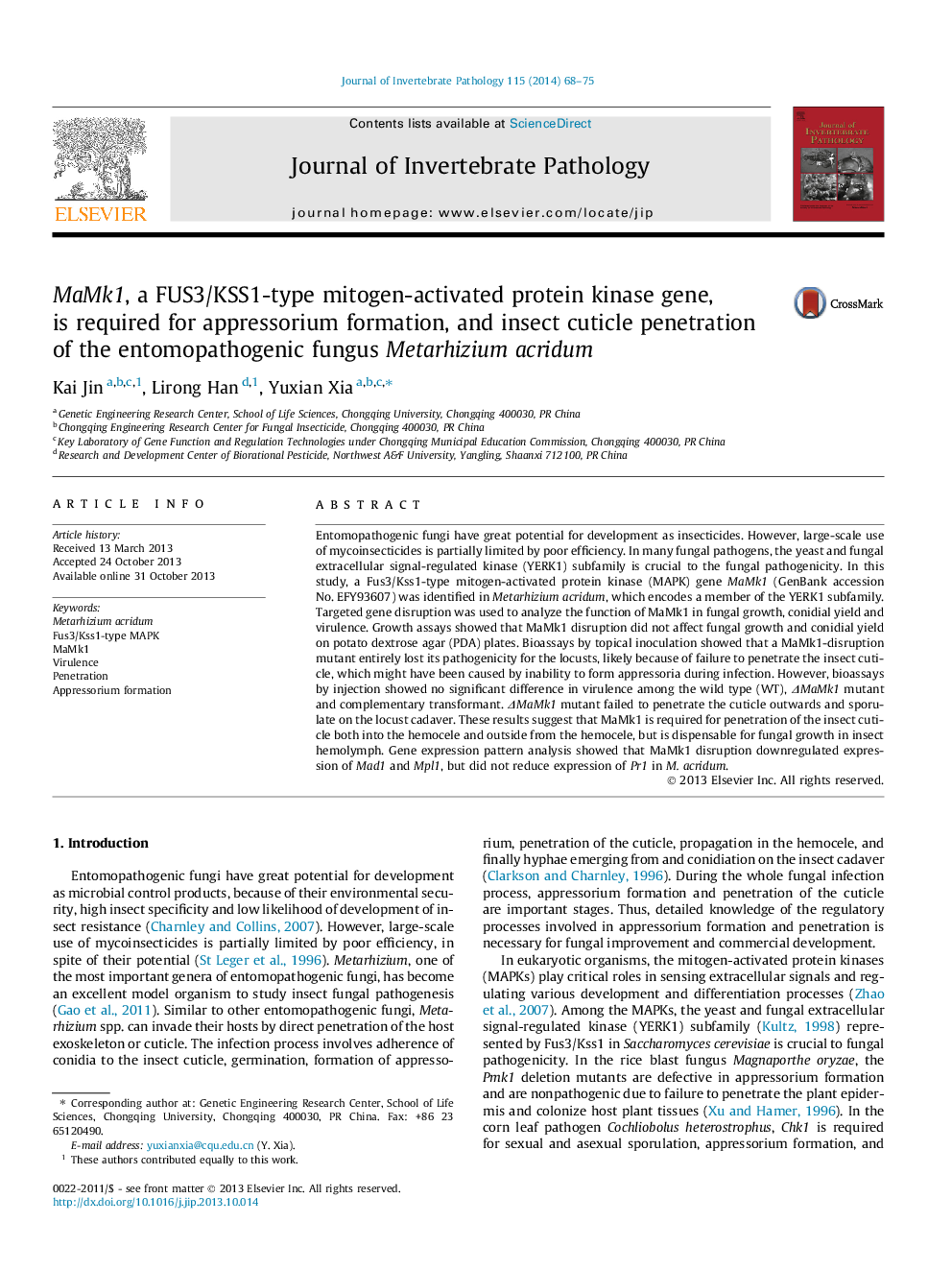| کد مقاله | کد نشریه | سال انتشار | مقاله انگلیسی | نسخه تمام متن |
|---|---|---|---|---|
| 6389543 | 1628237 | 2014 | 8 صفحه PDF | دانلود رایگان |

- MaMk1 disruption led to a complete loss of fungal virulence by topical inoculation.
- MaMk1 is essential for appressorium formation and penetration into the hemocele.
- ÎMaMk1 mutant could grow normally in the insect hemolymph by injection.
- ÎMaMk1 mutant failed to penetrate the cuticle outwards and sporulate on the locust.
Entomopathogenic fungi have great potential for development as insecticides. However, large-scale use of mycoinsecticides is partially limited by poor efficiency. In many fungal pathogens, the yeast and fungal extracellular signal-regulated kinase (YERK1) subfamily is crucial to the fungal pathogenicity. In this study, a Fus3/Kss1-type mitogen-activated protein kinase (MAPK) gene MaMk1 (GenBank accession No. EFY93607) was identified in Metarhizium acridum, which encodes a member of the YERK1 subfamily. Targeted gene disruption was used to analyze the function of MaMk1 in fungal growth, conidial yield and virulence. Growth assays showed that MaMk1 disruption did not affect fungal growth and conidial yield on potato dextrose agar (PDA) plates. Bioassays by topical inoculation showed that a MaMk1-disruption mutant entirely lost its pathogenicity for the locusts, likely because of failure to penetrate the insect cuticle, which might have been caused by inability to form appressoria during infection. However, bioassays by injection showed no significant difference in virulence among the wild type (WT), ÎMaMk1 mutant and complementary transformant. ÎMaMk1 mutant failed to penetrate the cuticle outwards and sporulate on the locust cadaver. These results suggest that MaMk1 is required for penetration of the insect cuticle both into the hemocele and outside from the hemocele, but is dispensable for fungal growth in insect hemolymph. Gene expression pattern analysis showed that MaMk1 disruption downregulated expression of Mad1 and Mpl1, but did not reduce expression of Pr1 in M. acridum.
MaMk1 is required for appressorium formation, penetration of the insect cuticle both into the hemocele and outside from the hemocele, but is dispensable for fungal growth in insect hemolymph.
Journal: Journal of Invertebrate Pathology - Volume 115, January 2014, Pages 68-75